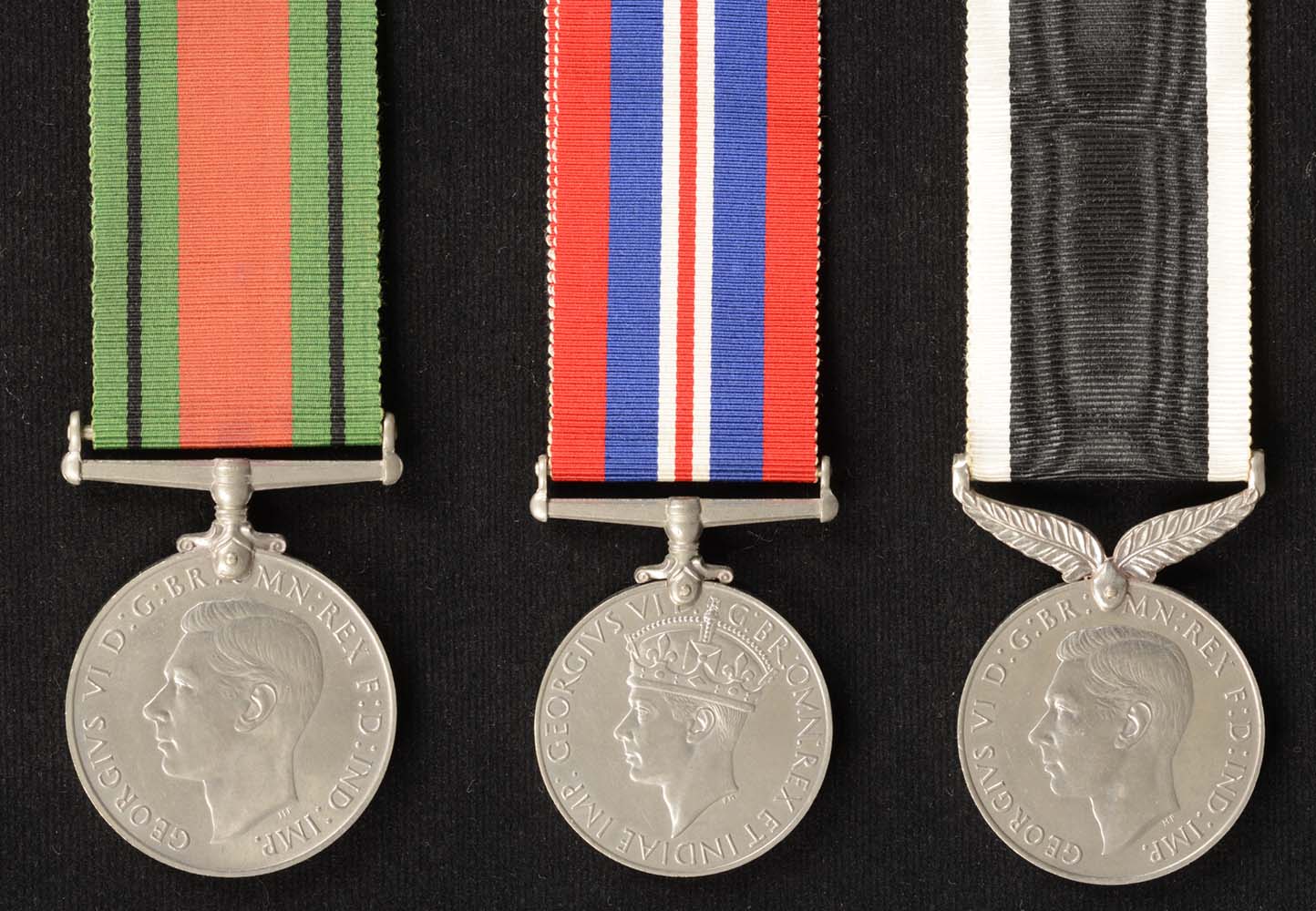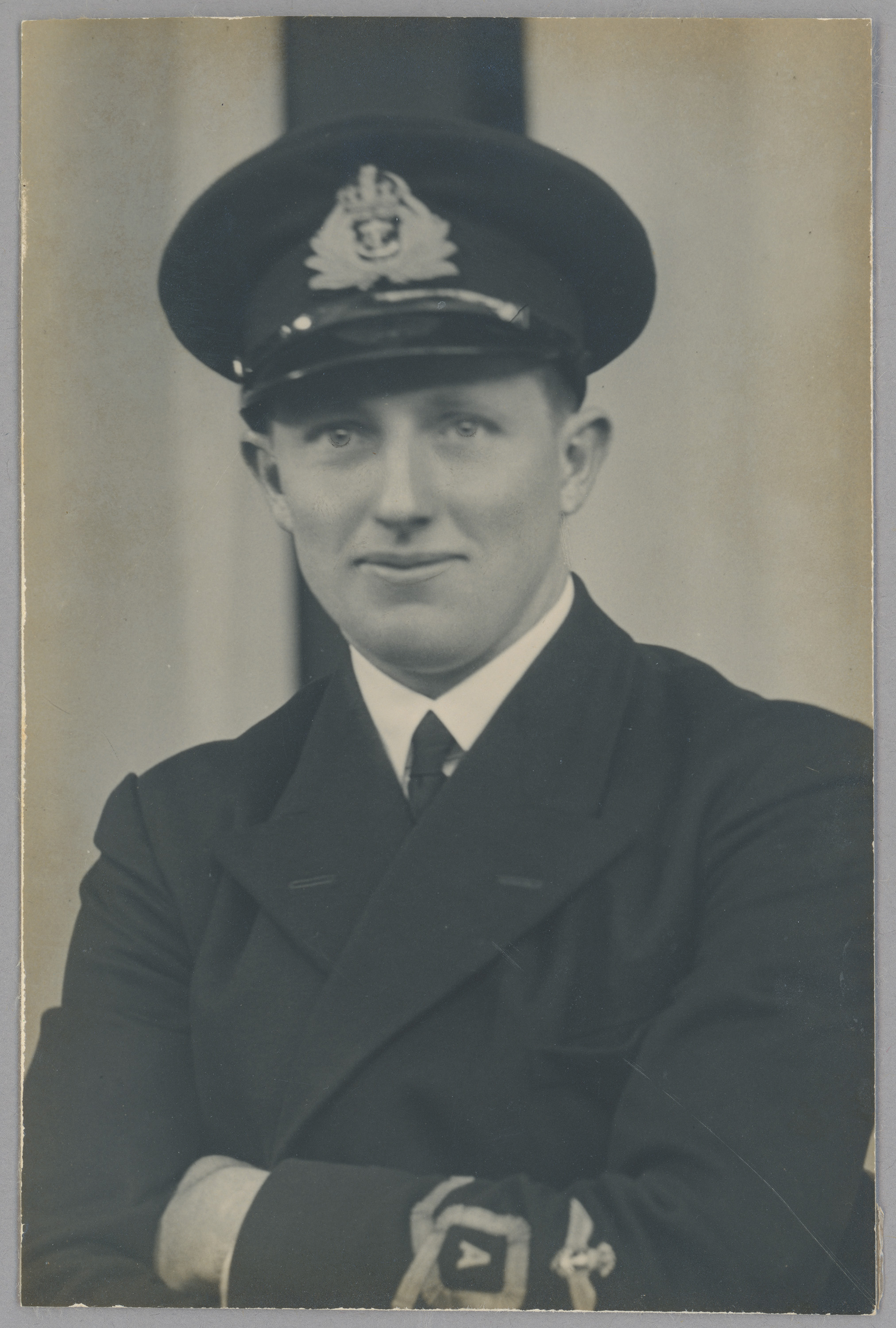

Display No. 1K
THOMSON, Percy Donald
Percy Thomson joined the Army Territorials at the start of the Second World War in 1939. In 1941 he joined the Royal New Zealand Naval Volunteer Reserve to become a naval aviator with the Fleet Air Arm (FAA). He travelled to Britain in the troop ship Rangitiki in December 1941. Thomson joined the 37 Pilots course in HMS Daedalus, a FAA shore establishment. He successfully passed the first part of his training and was sent to Canada in September 1942 for advanced training. Thomson completed his pilot training in February 1943 and was given his wartime commission and promotion to Temporary Sub-Lieutenant. He then returned to Britain for training in fighters and deck landings. Thomson also completed an Officer’s course at Royal Naval College Greenwich. He spent a month in HMS Jackdaw, a FAA base in Scotland, before being relocated to HMS Heron, a FAA training establishment in Yeovilton. In September 1943, Thomson was posted to 772 Naval Air Squadron and deployed to HMS Landrail, a FAA training establishment in Scotland. In early 1944, he was posted to 1842 Naval Air Squadron which was then sent to HMS Saker, a FAA shore establishment located in Maine, USA. Thomson was killed on 7 June 1944 while on a training flight. His Corsair collided with another off the coast and both aircraft crashed into the sea. His body was never recovered.
Awarded medal(s)
Medal Description [Left to Right]:
The Defence Medal
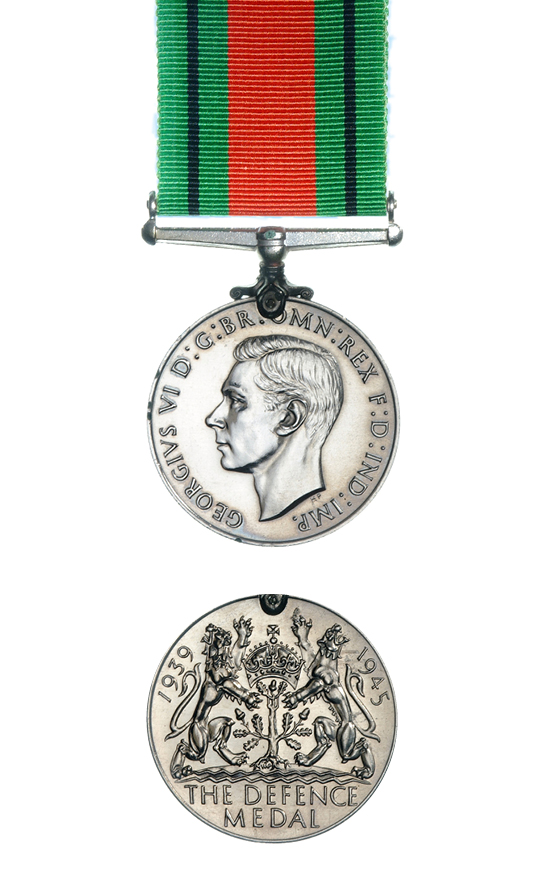
The Defence Medal was awarded to British and Commonwealth forces who served during the Second World War. It was awarded to New Zealand military personnel who served overseas in a non-operational area such as Great Britain, Palestine or Fiji. The ribbon’s flame-coloured orange centre band and green edge bands symbolise enemy attacks on Britain’s green and pleasant land. The narrow black stripes represent the black-outs against enemy air-attacks.
The War Medal 1939-1945
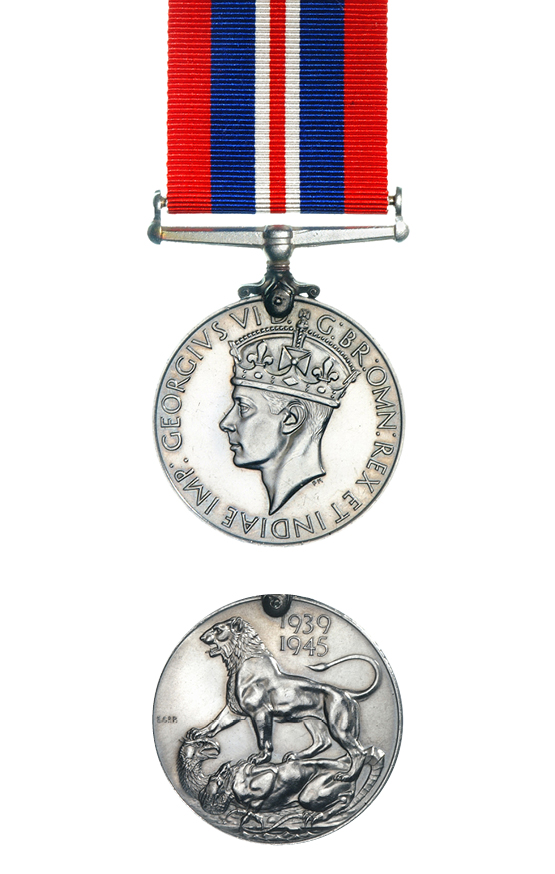
The War Medal 1939-45 was awarded across the British Commonwealth to all full-time members of the Armed Forces in the Second World War for 28 days service between 3 September 1939 and 2 September 1945, irrespective of where they were serving. The ribbon is the red, white, and blue of the (British) Union Flag. There is a narrow central red stripe with a narrow white stripe on either side. There are broad red stripes at either edge, the two intervening stripes being blue.
A bronze oak leaf on the medal ribbon denotes that the recipient was Mentioned in Despatches. To be Mentioned in Despatches a member of the armed forces had their name mentioned in an official report, written by a superior officer, and sent to a higher command. The report would describe the individual’s gallant or meritorious action in the face of the enemy.
The New Zealand War Service Medal
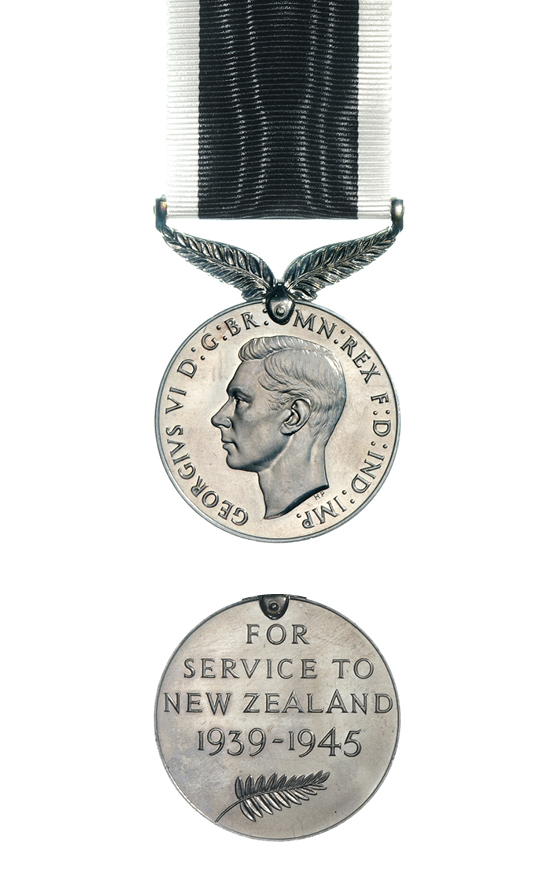
The New Zealand War Service Medal was awarded for 28 days’ full time service or six months’ part time service in the Second World War in any of the New Zealand Armed Forces including the Reserves, Naval Auxiliary Patrol Service, or Home Guard, between 3 September 1939 and 2 September 1945.

